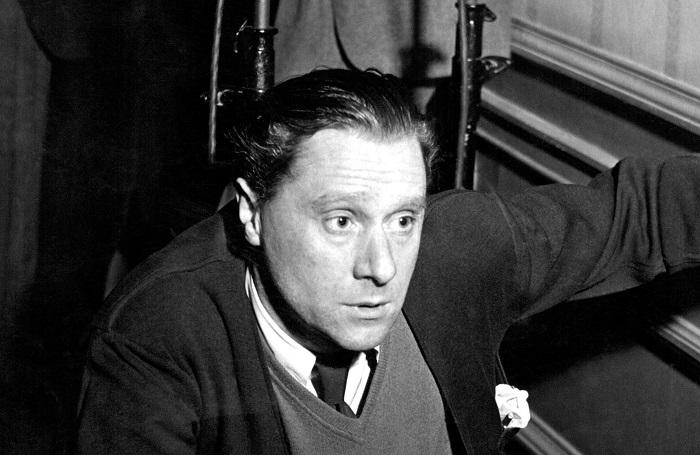Which Directors Shaped the Legacy of British War Movies?

Cinema has long influenced how societies remember conflict. In the United Kingdom, war films have served not only as entertainment but also as reflections of national identity, sacrifice, and resilience. The people who guide these stories—the directors—play a decisive role in shaping tone, style, and historical interpretation. Some filmmakers have left a particularly strong mark on British War Movies, influencing how they are seen both domestically and abroad. Understanding their work helps explain why this genre remains significant in cultural history.
Early Pioneers and World War II Realism
Carol Reed and Emotional Authenticity
One of the earliest figures to shape the genre was Carol Reed. Known for his later work on “The Third Man,” Reed directed wartime films that balanced realism with strong character development. In “The Way Ahead” (1944), he portrayed ordinary men becoming soldiers. The film avoided romanticized heroics and instead showed the slow transformation of civilians into a unit. Reed’s approach influenced later British War Movies by proving that stories about personal growth could be just as powerful as action scenes.
David Lean and Epic Scale
David Lean, although often associated with large-scale international productions, also contributed to the identity of British war cinema. His film “In Which We Serve” (1942), co-directed with Noël Coward, celebrated naval service while still presenting human vulnerability. Lean later created “The Bridge on the River Kwai” (1957), which remains one of the most famous war films in history. While it is a British-American production, its themes, structure, and performances reflect the legacy of British filmmaking. Lean’s mastery of visuals and pacing brought a level of cinematic ambition that elevated the genre.
Postwar Directors and National Reflection
Powell and Pressburger: Blending Art with Duty
Michael Powell and Emeric Pressburger offered a different perspective on war films. Their work, including “The Life and Death of Colonel Blimp” (1943) and “A Matter of Life and Death” (1946), mixed stylized visuals with deep moral questions. Rather than focusing only on battles, they explored issues like honor, aging, and the emotional costs of war. Their unique style showed that British War Movies could be artistic as well as patriotic. These films encouraged audiences to think about personal values as much as military victories.
Anthony Asquith and Human Stories
Anthony Asquith contributed films such as “The Way to the Stars” (1945), which concentrated on relationships among pilots, ground crews, and civilians during wartime. He emphasized dialogue, emotion, and everyday experiences rather than large combat sequences. This quieter form of storytelling influenced later directors who wanted to show war from a human rather than purely strategic perspective.
Modern Directors and Historical Reinterpretation
Richard Attenborough and Large-Scale Productions
Richard Attenborough became one of the key figures in bringing British war narratives to international audiences. His film “A Bridge Too Far” (1977) combined a massive ensemble cast with detailed battle sequences. It presented the failed Operation Market Garden with a mix of technical accuracy and dramatic tension. Attenborough’s work demonstrated that British War Movies could rival Hollywood epics in scope while still maintaining a distinctly British voice.
Peter Weir and International Collaborations
Although Australian, Peter Weir’s work on films like “Gallipoli” showed how British Commonwealth experiences could be part of a larger conversation. Such collaborations expanded the definition of British war cinema by including stories from across the empire. While not strictly a British director, his influence encouraged U.K. filmmakers to think beyond national borders when depicting war.
Contemporary Voices and Changing Perspectives
Christopher Nolan and a New Generation
In recent years, Christopher Nolan’s “Dunkirk” (2017) renewed international attention to British war stories. Nolan’s approach differed from older traditions. He focused on immersive sound design, non-linear storytelling, and minimal dialogue. The film emphasized survival and atmosphere rather than speeches or political context. Its success proved that modern techniques could revitalize the genre and attract younger audiences worldwide. Nolan showed that British War Movies could evolve while still honoring history.
Sam Mendes and Personal Histories
Sam Mendes’ “1917” (2019) took another step forward by using a continuous-shot technique to create an intense, real-time journey. While set during World War I, it continued the legacy of emotionally focused British war cinema. Mendes based the story partly on his grandfather’s experiences, adding a layer of personal authenticity. This film showed that contemporary directors can blend technical innovation with deeply human storytelling.
The Lasting Influence of These Directors
Shaping Cultural Memory
The directors mentioned above helped create the visual and emotional language associated with British war films. Their choices about character focus, narrative structure, and moral tone shaped how generations understand historical conflicts. By mixing realism, artistry, and emotional depth, they ensured that the genre remained both entertaining and meaningful.
Expanding Global Reach
Through their work, British War Movies moved beyond national audiences. Films like “The Bridge on the River Kwai” and “Dunkirk” became international successes, influencing war cinema worldwide. These directors demonstrated that stories rooted in British experiences could still hold universal appeal. Themes of courage, sacrifice, and survival resonate across cultures.
Conclusion: Directors as Architects of a Genre
The legacy of British War Movies owes much to the vision and skill of their directors. From Carol Reed’s realism to Christopher Nolan’s modern experimentation, each filmmaker contributed something unique to the genre. Their work transformed war films from simple patriotic messages into complex narratives that balance action with humanity.
These directors shaped how history is remembered on screen. They proved that war cinema can be both personal and epic, traditional yet innovative. As future filmmakers continue to reinterpret the past, the influence of these pioneers will remain visible. The genre they helped build continues to evolve, but its foundations—crafted by some of Britain’s greatest directors—remain strong and enduring.
- Art
- Causes
- Crafts
- Dance
- Drinks
- Film
- Fitness
- Food
- Jogos
- Gardening
- Health
- Início
- Literature
- Music
- Networking
- Outro
- Party
- Religion
- Shopping
- Sports
- Theater
- Wellness


